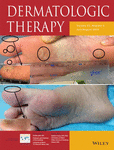Rituximab as a dual therapeutic option for pemphigus and primary cutaneous B-cell lymphomas: Two case reports
Abstract
It is known that individuals with immune dysregulation have an increased risk of non-Hodgkin lymphoma. This association has been proven for pemphigus as well as for other autoimmune disease. We describe the development of cutaneous B-cell lymphoma in two patients affected by long-standing pemphigus vulgaris and pemphigus foliaceus (i.e., characterized by histological and immunopathological features different from those of paraneoplastic pemphigus). In both cases, a therapy with rituximab allowed to achieve the complete remission for the lymphoproliferative disease (never recurred at follow up) and a substantial long-term improvement of the clinical manifestations of pemphigus, although persistent to serological disease and occasional recurrences. We suggest that clinicians should consider that patients with long-standing pemphigus, both vulgaris and foliaceus, may develop primary cutaneous B-cell lymphomas, as shown in our report, and in these cases the treatment with rituximab is elective, providing a therapeutic option for both low-grade or follicular, CD20-positive, B-cell non-Hodgkin lymphomas and pemphigus. Nevertheless, as shown in our cases, a constant surveillance for pemphigus is necessary.
CONFLICT OF INTEREST
No conflict of interest.




